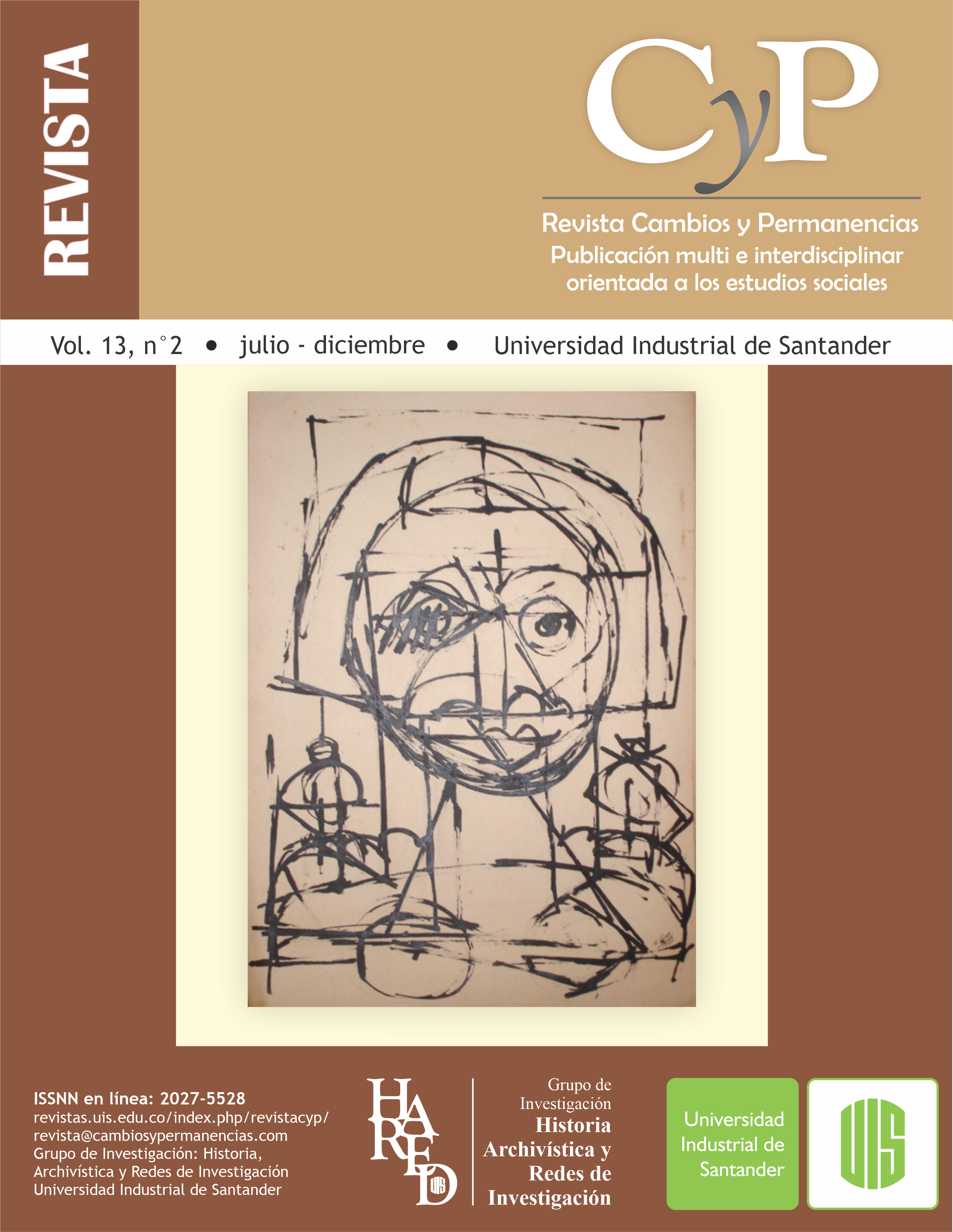La vulnerabilidad narrativa en excombatientes y reclusos de Colombia. Un análisis desde los Marcos de representación. Resultados de investigación
Publicado 2022-11-27
Palabras clave
- Vulnerabilidad narrativa,
- marcos de representación,
- excombatientes,
- privados de la libertad,
- reintegración y resocialización transformadora
Cómo citar
Derechos de autor 2022 Revista Cambios y Permanencias

Esta obra está bajo una licencia internacional Creative Commons Atribución 4.0.
Resumen
Colombia ha iniciado un proceso de gran valor e impacto para la sociedad, la implementación de los compromisos adquiridos en el Acuerdo de Paz firmado en 2016 entre el gobierno y el grupo guerrillero FARC. Asimismo, renovó la Ley de reparación de las víctimas del conflicto armado por 10 años más. A lo que, se le suma, la búsqueda permanente de adecuadas condiciones para los reclusos del país. Todos ellos (reintegración, reparación y resocialización) con un mismo propósito, ser procesos transformadores. No obstante, la realidad aún no es fiel a la misión de estos procesos. Desde el Grupo de Investigación sobre estudios críticos de la UPB en interacción con estos grupo poblacionales–excombatientes, víctimas y privados de la libertad, se identifica una vulnerabilidad en particular, “la vulnerabilidad narrativa”, la cual se exacerba por las categorías, fórmulas y conceptos preestablecidos en una sociedad que se ha configurado a través de un libreto, mediante el que las personas diseccionan las sensaciones y las percepciones en vía diferente a las propuestas de transformación. Lo anterior incita a la creación de un método que se consolida en un laboratorio biográfico-performativo y gesto biográfico-performativo centrado en la biografización. Este hallazgo investigativo que lleva a la configuración del método, junto con otras acciones importantes son objeto de reflexión y de visibilización en este escrito.
Descargas
Referencias
- Arendt, H. (2009). La condición humana. Paidós.
- Arendt, H. (2018). La libertad de ser libres. Taurus.
- Berger, J. (2000). Modos de ver. Gustavo Gili.
- Butler, J. (2006). Vida precaria: el poder del duelo y la violencia. Paidós.
- Butler, J. (2010). Marcos de guerra. Las vidas lloradas. Paidós.
- Delory-Momberger, C. (2009). Biografía y educación. Figuras del individuo-proyecto. Editorial de la Facultad de Filosofía y Letras Universidad de Buenos Aires / Consejo Latinoamericano de Ciencias Sociales.
- Delory-Momberger, C. (2015). La condición biográfica. Ensayos sobre el relato de sí en la modernidad avanzada. Universidad de Antioquia.
- Esposito, R. (2006). Bios. Biopolítica y filosofía. Amorrortu.
- Esposito, R. (2009). Immunitas. Protección y negación de la vida. Amorrortu.
- Foucault, M. (2006). Seguridad, territorio, población. Curso en el Collège de France (1977-1978). Fondo de Cultura Económica.
- Glaser, B. G. (1992). Basics of grounded theory analysis. Sociology Press.
- Gusdorf, G. (1991). Lignes de vie. Ed. O. Jacob.
- Hooks, B. (2022). Enseñar pensamiento crítico. Rayo Verde.
- Iglesia Católica. Papa (2020) Laudato SI': Carta encíclica del Sumo Pontífice Francisco: sobre la fraternidad y la amistad social. https://www.vatican.va/content/francesco/es/encyclicals/documents/papa-francesco_20201003_enciclica-fratelli-tutti.html
- Lakoff, G. (2011). No pienses en un elefante. Lenguaje y debate político. Editorial Complutense S. A.
- Levinas, E. (2006). Los imprevistos de la historia. Sígueme.
- Levinas, E. (2021). De otro modo que ser o más allá de la esencia. Sígueme S.A.
- Malka, S. (2006). Emmanuel Levinas. La vida y la huella. Trotta.
- Mèlich, J-C. (2014). La condición vulnerable (Una lectura de Emmanuel Levinas, Judith Butler y Adriana Cavarero). Ars Brevis.
- Mendoza, M y Bustos, P. (2019). Configuración de subjetivaciones en pospenados en Colombia. Bogotá. Derecho Penal y Criminología, 39, 145–169.
- Morín, E. (1986). Cultura, Conocimiento y Determinismos Culturales. http://www.edgarmorin.org/images/publicaciones/edgar-morin-cultura-conocimiento-y-determinismos-culturales.pdf
- Moscovici, S. (1961). El psicoanálisis, su imagen y su público. Presses Unversitaires de France.
- Perera, M. (2005). Sistematización crítica sobre la Teoría de las Representaciones Sociales [Tesis de Doctorado, CIPS].
- Ricoeur, P. (1990). Soi-même comme un autre. Seuil.
- Ricoeur, P. (2013). En torno al psicoanálisis. Escritos y conferencias 1. Trotta.
- Ruiz, A. y Velásquez, M. (Comp.). (2022). Crítica a la reintegración en Colombia: seguridad, hábitat y ciudadanía. Universidad Pontificia Bolivariana 20 Colecciones de Investigación en Derecho.
- Safinia, F. (Director). (2019). Entre la razón y la locura [Película]. Bruce Davey, Gastón Pavlovich, Nicolas Chartier.
- Schütz, A. y Luckmann, T. (1984). Strukturen der lebenswelt. Suhrkamp.
- Shklar, J. (1989). El liberalismo del miedo. Herder.
- Strauss, A. & Corbin, J. (1998). Basics of qualitative research: Techniques and procedures for developing grounded theory. Sage.
